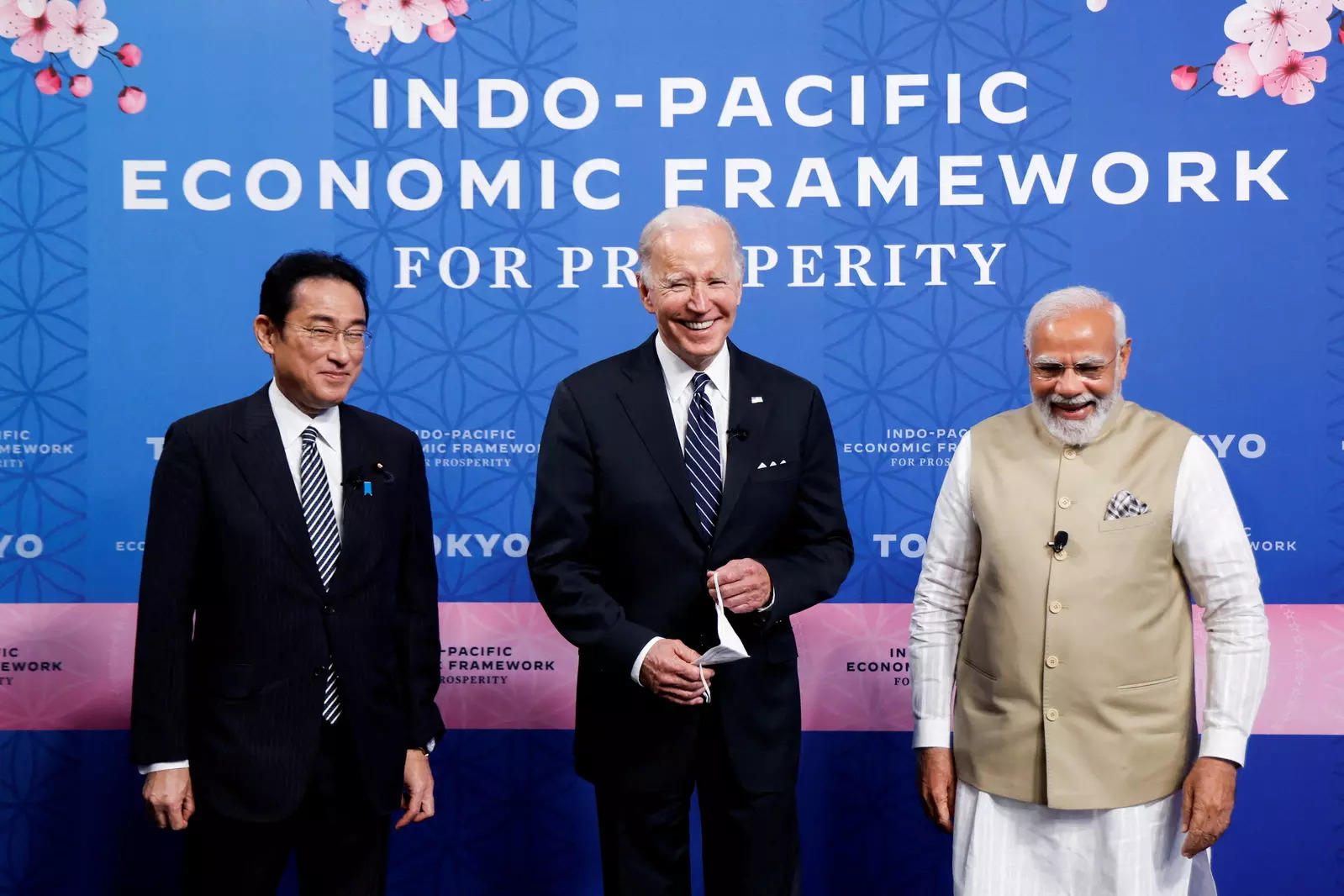 India has joined the US-led economic initiative Indo-Pacific Economic Framework, which is part of US efforts to put some economic heft into its Indo-Pacific presence that has been on the decline after its decision to quit the Trans Pacific Free Trade Agreement in 2017.
India has joined the US-led economic initiative Indo-Pacific Economic Framework, which is part of US efforts to put some economic heft into its Indo-Pacific presence that has been on the decline after its decision to quit the Trans Pacific Free Trade Agreement in 2017.
The IPEF seeks to formulate a common set of rules and standards for member countries around the four pillars of connectivity and digital trade; resilient supply chains; clean energy; and corruption-free fair trade. India agreed to be amongst the first 13 members of the grouping, which also includes Australia, Brunei, Indonesia, Japan, South Korea, Malaysia, New Zealand, the Philippines, Singapore, Thailand, and Vietnam.
It comes five years after the US withdrew from the Trans-Pacific Partnership, a trade deal signed by 12 countries in Asia-Pacific, North America and South America.
Since then the US has been largely absent in the region and is engaged in a trade war with China. The IPEF is seen as a means to counter China in the region.
It is not a free trade agreement. No market access or tariff reductions have been outlined, although it can pave the way to trade deals. It’s a forum for participating countries to solidify their relationships and engage in crucial economic and trade matters that concern the region, such as building resilient supply chains battered by the pandemic.
Among the four main tenets of the framework, the Connected economy includes higher standards and rules for digital trade, such as cross-border data flows while a resilient economy aims for resilient supply chains that will withstand unexpected disruptions like the pandemic.
Clean economy would target green energy commitments and projects while a fair economy bats for implementing fair trade, including rules targeting corruption and effective taxation.
“Our efforts include, but are not limited to, cooperation in the digital economy,” the joint statement said without ruling out tariff negotiations under the proposed trade pact.
How does India stand to gain?
India has been looking to gain a foothold in the supply chains that flow from China and Southeast nations to the western and other countries. Western countries are looking to diversify their supply chains to avert shocks seen during the pandemic.
One of the IPEF’s pillars, resilient supply chains gives an opportunity to India to establish its credentials as a reliable supplier of goods to the world. The IPEF nations will look at fellow countries for the supply chain rejigs and India being a large nation, stable polity and demographic dividend fits the bill to supply.
In clean energy, India has embarked on a mission for sustainability in the fight against climate change. The country has set stiff targets to achieve renewable power and reduce emissions. Partnerships will IPEF nations would be symbiotic and help Indian conglomerates such as Adani and Reliance Industries that are betting on green power.
The thrust on digital trade gives India, a pioneer in emerging technologies such as UPI, an opportunity to grab a larger pie of such global trade given the economic heft of the other countries in the grouping.
India had not joined RCEP, the largest regional trading bloc globally, due to its concern that the pact would allow China to flood the country’s market with cheap products at preferential import duties, leaving domestic producers uncompetitive. The IPEF, with a membership accounting for about 40 per cent of the global GDP, is set to provide India with another opportunity to be part of a mega economic arrangement, but outside the influence of China.
As China’s growth took speed after it joined the World Trade Organisation (WTO), for India, IPEF can give the next big trigger growth after IT, pharma and auto exports provided in the last two decades.